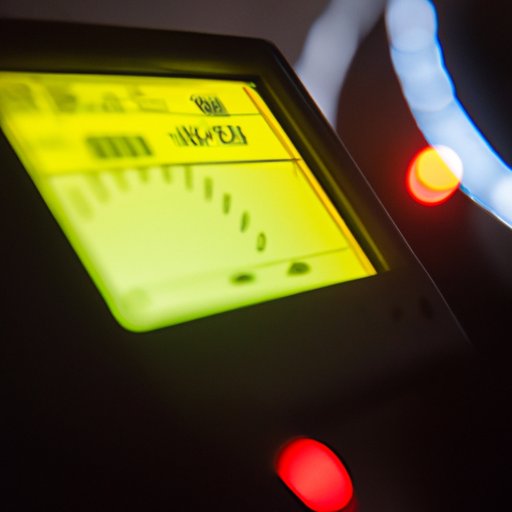
Introduction
The check engine light is a warning that appears on a car’s dashboard when there is an issue with the engine or emissions system. While it may seem like just another annoying light to drivers, it should not be ignored. Ignoring the warning can lead to costly repairs down the road. This article will provide a step-by-step guide on how to reset the check engine light, common reasons for the light to come on, and why it’s important to reset it after repairs have been made.
Step-by-step guide
Resetting the check engine light can be an easy process, but it’s important to do it properly to avoid further issues with a car. Here is a step-by-step guide:
1. Identify the issue: Before resetting the light, make sure to identify the issue. This can be done by using an OBD2 scanner or by taking the car to a mechanic for a diagnostic test. The issue will need to be addressed before resetting the light.
2. Disconnect the battery: One way to reset the light is to disconnect the battery for 10-15 minutes. This can be done by removing the negative cable from the battery. However, keep in mind that disconnecting the battery can also reset other settings like the radio and clock, which will need to be reset later.
3. Use an OBD2 scanner: Another way to reset the light is to use an OBD2 scanner. Plug the scanner into the diagnostic port under the dashboard and follow the instructions on the device. This method is more precise as it can provide more information about the issue causing the light to turn on.
4. Follow the manufacturer’s instructions: Some car manufacturers may have specific instructions on how to reset the check engine light. Check the car’s manual or contact the manufacturer for more information.
Common reasons for check engine lights to come on
The following are some of the most common reasons for the check engine light to come on:
– Faulty oxygen sensor: The oxygen sensor measures the amount of oxygen in the exhaust system. A faulty sensor can lead to decreased fuel efficiency and damage to the catalytic converter.
– Loose gas cap: A loose gas cap can cause the fuel system to become pressurized and trigger the check engine light.
– Malfunctioning catalytic converter: The catalytic converter converts harmful emissions into less harmful ones. A malfunctioning converter can lead to increased emissions and reduced performance.
– Dead battery: A dead battery can cause malfunctions in the electrical system, leading to the check engine light turning on.
It’s important to address these issues as soon as possible to avoid further damage to the car. Some issues can be resolved by checking components like the gas cap and replacing them if needed. Others may require professional assistance.
Importance of resetting the check engine light
After repairs have been made, it’s important to reset the check engine light to ensure that any new issues will be identified. If the check engine light remains on, it could indicate that the issue has not been resolved. A car with unresolved issues may fail an emissions test or cause further damage to the engine. Additionally, resetting the light can help improve fuel efficiency and performance.
Highlight important diagnostic tools
There are several diagnostic tools available for resetting the check engine light:
– OBD2 scanners: These scanners can read and reset codes related to the check engine light. They can help identify the specific issue causing the light to turn on.
– Code readers: Code readers can read and reset codes related to the check engine light. However, they may not provide as much information as an OBD2 scanner.
– Smartphone apps: There are several smartphone apps available that can be used to read and reset codes related to the check engine light. However, keep in mind that these apps may not be as accurate as other diagnostic tools.
Seek professional help
In some cases, it may be necessary to seek professional help to reset the check engine light. This can be especially true if there is an issue with the computer system. Finding a reputable mechanic is important to ensure that the issue is addressed properly. Look for certified mechanics and read reviews before choosing a mechanic.
Conclusion
Resetting the check engine light may seem like a daunting task, but it is important to address any issues early to avoid costly repairs down the road. By following the step-by-step guide and identifying common issues, drivers can help maintain the health and performance of their car. Remember to always seek professional help when needed, and don’t hesitate to address any warning lights before they become bigger issues.




